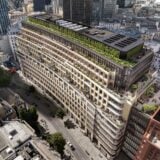Annual growth slowed to 1.8% in prime regional property markets at the end of 2016 with realistic pricing the key to selling, according to new research.
Indeed, in the final quarter of the year price growth was just 0.1% which the analysis report from real estate firm Savills says reflects caution on the part of buyers regarding Brexit and subsequent economic uncertainty, as well as the effects of stamp duty on higher value properties.
‘It is clear now that demand is being driven much more by size and value than location, with buyers prepared to move further afield for a good deal,’ said Lucian Cook, head of residential research at Savills.
He explained that the effects of the stamp duty reforms are being felt across the country with properties worth over £2 million experiencing small price falls over 2016. ‘This being said, at the top end of the country house market, demand has been noticeably bolstered by international buyers taking advantage of the weakness of sterling,’ he pointed out.
The research shows that lower value properties have performed slightly better but still experienced only marginal annual growth. Likewise, lower value markets slightly further from London have fared better than their closer counterparts, with the strongest annual growth seen in the outer commute areas typically 30 to 60 minutes travel time from London.
The data shows that properties under £500,000 have seen prices increase by 0.5% quarter on quarter, 3.4% year on year and 14.9% over five years. In the £500,000 to £1 million market prices were up 0.3% quarter on quarter, 2.7% year on year and 11% over five years.
In the £1 million to £2 million sector prices are up 7.8% over five years to the end of 2016 but that growth has slowed considerably too, to 1.6% year on year and 0.2% on a quarterly basis. But the £2 million plus market has seen prices fall for the last five years, down 0.5% over five years, 0.9% year on year and 0.6% quarter on quarter.
The report also explained that a general trend seen across the regional market over the last few years is the popularity of urban locations over rural ones. Prime properties in cities such as Bristol and Cambridge have seen annual growth of 3.8% over 2016, compared to just 0.9% for rural locations.
However, the rate of growth in these cities appears to be slowing as previous growth that was driven by a flow of equity from London buyers has left them looking fully valued. Even in these popular urban locations values remained relatively flat over the fourth quarter of 2016.
Despite this, properties that are located close to good schools and transport links have remained popular with families and young professionals, especially if appropriately priced.
Looking ahead, buyer sentiment across the market is expected to remain sensitive over the next few years as the process to leave the EU unfolds and the effects of the changes to stamp duty are absorbed.
‘As a result, we are forecasting there to be little growth across the prime country markets over 2017. The slowing down of growth across these markets over the last year, and especially in key regional cities, suggests that sellers need to be responsive to current market conditions and the fluctuations in demand that are expected over the next two years,’ said Cook.
‘We expect demand for good quality stock in areas with good schools and transport links to London to remain strong. More generally, properties that present opportunities for buyers willing to take a medium term view on pricing will remain popular,’ he added.






